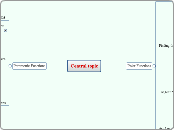Central topic
Parametric Functions
Chain Rule for Parametric equations
Sometimes, it is hard to differentiate equations in terms of x and y. Thus, instead we differentiate parametrically. That is, both x and y are expressed in terms of t.

and similarly,

such that,

Hence, we take advantage of chain rule to find
It is also useful to know how to convert a parametric equation to Cartesian form.
Steps to convert Parametric to Cartesian
Firstly, we make t as the subject topic for both x and y equations.
Secondly, we equate them.
astly, simplify the equation and make x or y the suibject or you can even leave it in any form you want
Arc Length of Curves
Condition
Read Notes
Formula
For Parametric equation

For Cartesian Equation

Tangent Lines to Parametric equations
Find the expression for dy/dx
Substitute t=t0
Evalutate the expression
Special Cases
1. If dy/dt = 0, but dx/dt != 0, then it is a horzeontal tangent line.2. If dy/dt != 0, but dx/dt = 0, then it is a vertical tangent line.3. If dy/dt = 0 and dx/dt = 0, then dy/dx is of inderterminate form. Such points are known as singular points and no gerneral statements can be made about it until further probe.
Polar Functions
Converting between polar and cartesian form
Convert from polar to cartesian


Convert from cartesian to polar


Finding the Derivative
Method
1. Express x and y in terms of theta.2. Simplify the equation3. Evaluate dy/dx
formulas



Tangent/Normal Lines to Polar Curve
Method
. Find the expressing for dy/dx.2. Evalutet it at \theta = \theta03. Find the corresponding value of x and y4. Write down the equation for tangentNote: Normal lines are found the same way but the gradient is -1/m, where m is the gradient of the tangent.
Arc Length of a Polar Curve
Conditions
The segment of polar curve from alpha to beta is not traced more than once
dr/d\theta is continuous from alpha to beta.
Formulas

